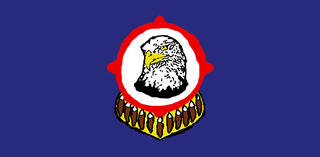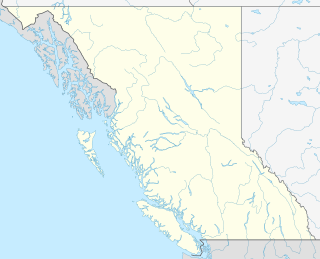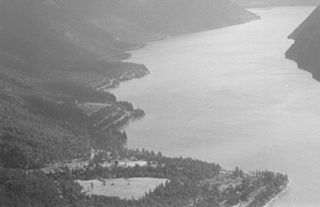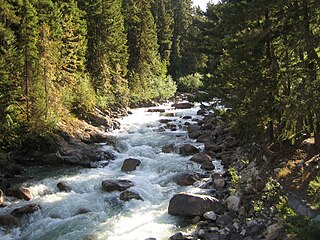History
1858-60
The boomtown of Bridge River was one of a half-dozen gold rush-era settlements which sprang up in the vicinity of today's Lillooet, the others being Cayoosh Flat (Lillooet itself), Parsonsville, Marysville, the Upper Fountain (Fountain), and Pavilion. Located at the confluence of the Bridge River with the Fraser, the location of the Bridge River Fishing Grounds (aka Six Mile or Setl) the town sprang up around a toll bridge spanning the rapids, aka the Lower Fountain, as the location of this townsite was also called. The bridge was built by an entrepreneur who tore down a First Nations-built pole bridge which had spanned the river at the same spot. The resulting town included hotels, a bank, a barber and various "restaurants" and a blacksmith's, but it vanished very quickly as the river crossing at this point did not turn out to be popular, as ferry crossings farther downstream were closer to Cayoosh Flat and Parsonsville, which were across the river from each other, and charged fares competitive with the bridge tolls. No mention is made of when the bridge was torn down, or when the last surviving remnant of the town's buildings and businesses finally closed. Nothing survives of the townsite today. On the triangle of bench above the confluence of the rivers there are a couple of old log-cabin ruins, but they are remnants of a rancherie of the Xwisten First Nation, the Bridge River Indian Band, who now mostly live farther up the Bridge River a few miles.

A boomtown is a community that undergoes sudden and rapid population and economic growth, or that is started from scratch. The growth is normally attributed to the nearby discovery of a precious resource such as gold, silver, or oil, although the term can also be applied to communities growing very rapidly for different reasons, such as a proximity to a major metropolitan area, huge construction project, or attractive climate.
A Rancherie is a First Nations residential area of an Indian Reserve in colloquial English throughout the Canadian province of British Columbia. Originating in an adaptation of ranchería, a Californian term for the residential area of a rancho, where most hands were aboriginal, the term became in British Columbia prior to the Fraser Canyon Gold Rush of 1858, but from then on and in the series of gold rushes and settlement colonization that followed, the term came into wide use throughout the colony.
The Bridge River Indian Band also known as the Nxwísten First Nation, the Xwisten First Nation, and the Bridge River Band, is a First Nations government located in the Central Interior-Fraser Canyon region of the Canadian province of British Columbia. It is a member of the Lillooet Tribal Council, which is the largest grouping of band governments of the St'at'imc people.
1880s-1910s
The scattered population of the upper Bridge River in the days of its early exploration commonly referred to themselves as the residents of Bridge River, meaning the district and basin, although no town in the vicinity ever wore the name itself. Generally, especially in later years, residents of the upper Bridge River basin or the goldfield towns which eventually sprang up around it used the phrase "the Bridge River" to refer to the collection of communities, although as these became more well-established the specific usage to mean the upper goldfields area shifted to mean the entirety of the Bridge River Country, which includes the adjacent basin of Anderson and Seton Lakes. The residents of the lower Bridge River - below its Big Canyon - sometimes refer to themselves as living in "Bridge River" but normally will refer to the specific locality where they live - Moha, Applespring, Antoine Creek.

Anderson Lake is located about 25 miles North of the town of Pemberton, British Columbia and is about 28.5 km² in area and around 21 km (13 mi) in length. Its maximum depth is 215 meters. It is drained by the Seton River, which feeds Seton Lake and so the Fraser River. It is fed by the Gates River, which drains from the Pemberton Pass divide with the Birkenhead River valley towards Pemberton-Mount Currie.

Seton Lake is a freshwater fjord draining east via the Seton River into the Fraser River at the town of Lillooet, British Columbia, about 22 km long and 243 m in elevation and 26.2 square kilometres in area. Its depth is 1500 feet.
1920s-1960s
The name Bridge River also become the local convention for the hydroelectric townsite of the Bridge River Power Project at South Shalalth on Seton Lake following its establishment in the 1920s. This usage fell out of use after completion of the hydroelectric project, when most residents moved away and the economic and social character of the Lillooet Country changed as a result. The townsite was a model development by the 1920s power company which launched and then abandoned the project, and included well-built beam-frame houses, a fine hotel geared at mine-bound investors, community hall, skating rink-tennis court, and landscaped gardens. Virtually empty during the 1930s the townsite became one of the five relocation centres for Japanese-Canadian internees in the Lillooet area and thereby became the temporary home of Dr. Masajiro Miyazaki, who was appointed coroner in Lillooet during the war despite his internment and became one of Lillooet's two Order of Canada inductees.
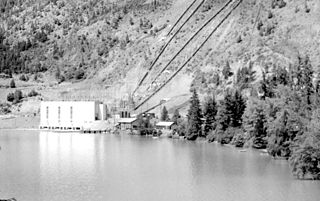
The Bridge River Power Project is a hydroelectric power development in the Canadian province of British Columbia, located in the Lillooet Country between Whistler and Lillooet. It harnesses the power of the Bridge River, a tributary of the Fraser, by diverting it through a mountainside to the separate drainage basin of Seton Lake, utilizing a system of three dams, four powerhouses and a canal.

In 1942, Japanese Canadian Internment occurred when over 22,000 Japanese Canadians from British Columbia were evacuated and interned in the name of "national security". This decision followed the events of the Japanese invasions of British Hong Kong and Malaya, the attack on Pearl Harbor in Hawaii, and the subsequent Canadian declaration of war on Japan during World War II. This forced relocation subjected many Japanese Canadians to government-enforced curfews and interrogations, job and property losses, and forced repatriation to Japan.
Masajiro Miyazaki, CM was a Japanese-Canadian osteopathic physician who practised in Vancouver prior to World War II. During World War II, he was appointed as a coroner by the British Columbia Provincial Police in the town of Lillooet, British Columbia. In addition to coroner's duties he also served as effective general practitioner in the Lillooet area, including for the area's four wartime "self-supporting centres". Miyazaki's practice also included the Japanese Canadian internment camp at Taylor Lake. Towards the end of his life, Miyazaki was recognized for his services to the community, which included founding the local ambulance service and instigating a proper hospital for Lillooet, by being enrolled in the Order of Canada.
After World War II, the townsite was expanded as the power project was revived and went into full swing. In addition to new housing built on the ridgetop above the village, and extensive trailer camps and other housing at nearby Seton Portage and in Shalalth proper, and facilities in the original townsite were expanded to include large modern bunkhouses and a movie theatre, although the hotel had burned down in the early 1950s.

Seton Portage is an historic rural community in British Columbia, Canada, that is about 25 km (16 mi) west of Lillooet, located between Seton Lake and Anderson Lake. "The Portage" was formed about 10,000 years ago when the flank of the Cayoosh Range, which is the south flank of the valley, let go and slid into the middle of what had been a single lake. The result is a location similar to Interlaken, Switzerland, with two fjord-style lakes flanking a narrow and very short strip of land between them.
